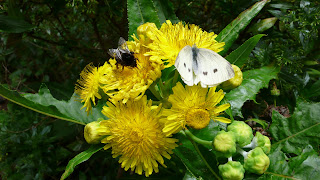 |
|
Beetle (Chauliognathus pensylvanicus) on
Rudbeckia (Black-eyed Susan) |
Since
the first 18th Century scientific accounts of how pollination works
it has risen in respectability in botany, zoology, evolution and ecology. Pollination biology provided huge
opportunities for focussed research in basic and applied sciences so that
disciplinary solitudes arose. Botany and
zoology tended to be separate within biology as well as in agronomy and
apiculture. Over the history of
pollination biology, which can be placed into six inter-related facets, philosophical,
social, scientific, technical, political and business agendas have hampered,
and continue to hamper, objective science.
Nevertheless, modern interdisciplinary approaches to pollination
ecology, its inherent co-evolutionary principles, and the current “pollination”
crisis have become a scientific and social unifying force that cannot but lead
to new knowledge, insights and, I hope, wisdom (new synthesis).
Read the scientific publication in JPE.


